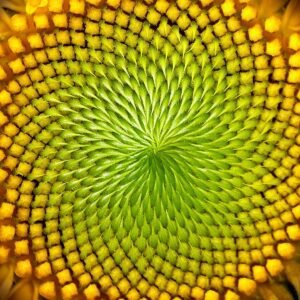Witchcraft has captivated human imagination for centuries, evolving from ancient spiritual practices to modern-day belief systems. Its origins trace back to early human societies, where individuals sought to understand and influence the natural world through magical means. Wicca, a contemporary form of witchcraft, emerged in the mid-20th century and has gained popularity as a nature-based spiritual path.
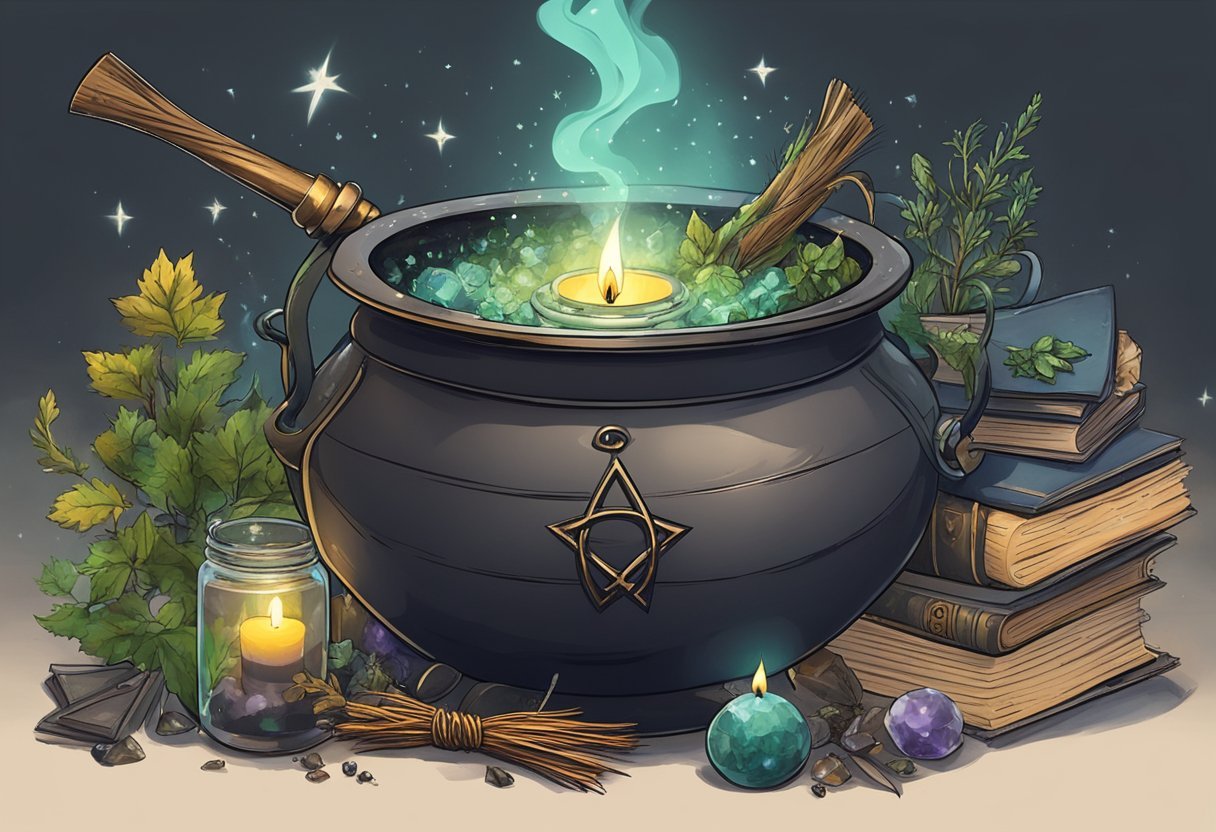
The historical roots of witchcraft are complex and varied, spanning diverse cultures and time periods. From the witch hunts of medieval Europe to the revival of pagan traditions in the modern era, the concept of witchcraft has undergone significant transformations. Today, witchcraft encompasses a wide range of beliefs and practices, from traditional folk magic to structured religious systems like Wicca.
Key Takeaways
- Witchcraft has ancient origins rooted in early human attempts to understand and influence nature through magical means.
- Modern witchcraft, including Wicca, emerged in the mid-20th century as a nature-based spiritual path.
- Contemporary witchcraft practices vary widely, incorporating elements from diverse cultural and historical traditions.
Historical Origins of Witchcraft

Witchcraft has ancient roots stretching back thousands of years. Its practices and beliefs evolved across cultures and time periods, shaping both pagan traditions and later persecution.
Ancient Practices and Beliefs
Pagan religions with pre-Christian roots often incorporated magical practices. Many ancient cultures had pantheistic or polytheistic belief systems that recognized multiple deities and spirits in nature.
In ancient Mesopotamia, Egypt, Greece, and Rome, people practiced various forms of magic and divination. Priests, oracles, and healers used spells, potions, and rituals to communicate with the divine or influence events.
Some key practices included:
- Herbal medicine and alchemy
- Astrology and fortune-telling
- Invoking deities or spirits
- Use of magical objects and symbols
These traditions formed the basis for many later occult and magical practices associated with witchcraft.
Witchcraft in Medieval and Renaissance Europe
As Christianity spread across Europe, pagan practices were often labeled as witchcraft. The medieval Church viewed witchcraft as heresy and demonic in nature.
Folk magic and healing traditions persisted in rural areas. Cunning folk used herbs, charms, and rituals to treat illness, find lost items, and ward off evil.
The Renaissance period saw increased interest in occult knowledge. Learned magicians studied alchemy, astrology, and ceremonial magic. These practices influenced later witchcraft traditions.
Persecution and Witch Hunts
From the 15th to 18th centuries, witch hunts swept across Europe and colonial America. Tens of thousands were accused of witchcraft and executed.
Factors that contributed to witch hunts included:
- Religious conflict and upheaval
- Social and economic tensions
- Misogyny and scapegoating of marginalized groups
- Torture and forced confessions
The Salem witch trials of 1692-1693 are among the most infamous cases. 19 people were executed and many more imprisoned on charges of witchcraft.
Witch hunts declined in the 18th century as Enlightenment ideas spread. However, their legacy shaped perceptions of witchcraft for centuries to come.
Foundations of Modern Witchcraft
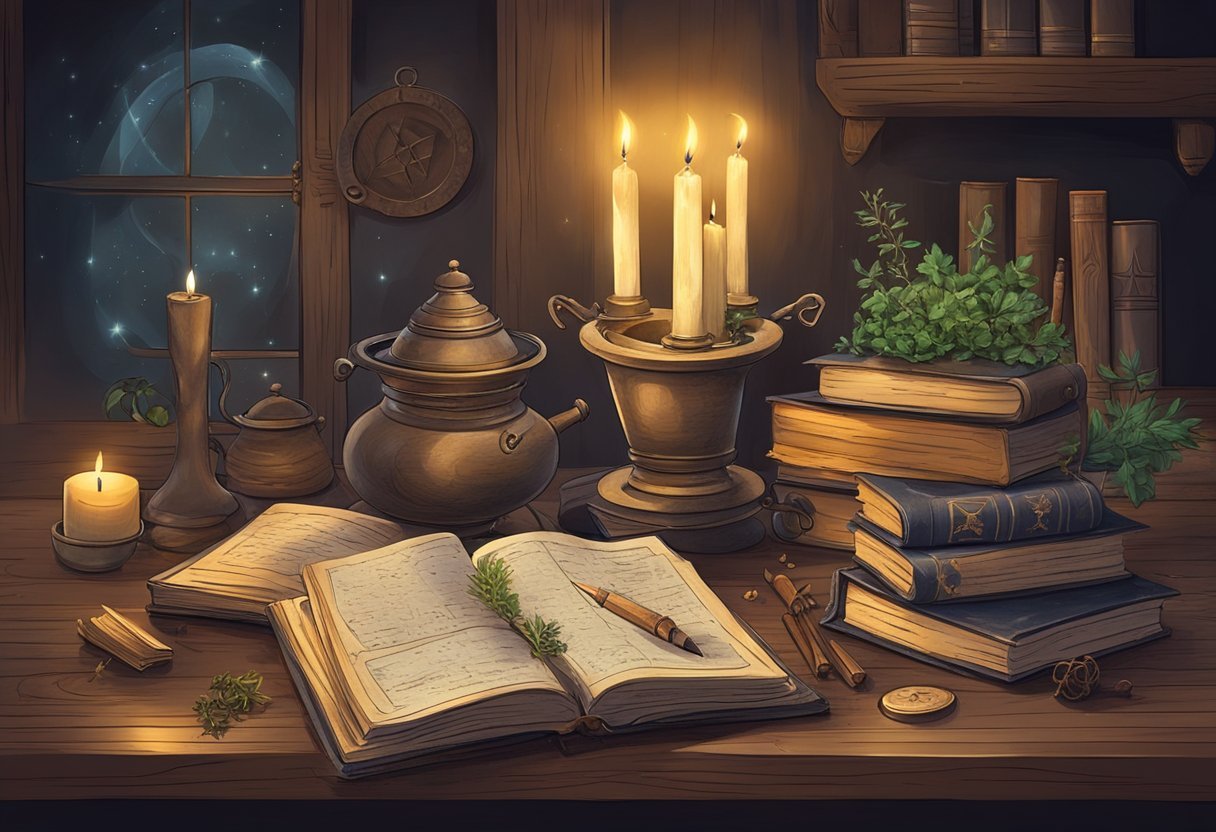
Modern witchcraft emerged in the mid-20th century, drawing on both ancient traditions and contemporary innovations. Key figures and writings shaped its development, while new practices arose to meet the spiritual needs of practitioners in the modern world.
Influential Figures and Writings
Gerald Gardner played a pivotal role in shaping modern Wicca. He introduced Gardnerian Wicca, a duotheistic tradition worshipping a God and Goddess.
Gardner’s writings, including “Witchcraft Today” (1954), laid the groundwork for contemporary witchcraft practices. He popularized the use of the Book of Shadows, a personal grimoire containing spells, rituals, and magical knowledge.
Doreen Valiente, Gardner’s high priestess, refined Wiccan rituals and wrote influential texts. Her “Charge of the Goddess” became a cornerstone of Wiccan liturgy.
Other notable authors like Raymond Buckland and Scott Cunningham further developed and spread Wiccan teachings through their books.
Rise of Contemporary Practices
Modern witchcraft practices evolved to accommodate diverse spiritual needs. Solitary practitioners emerged alongside traditional covens, allowing for more personal and flexible approaches to the craft.
Wiccan and Pagan associations formed, creating communities and facilitating the exchange of ideas. Public rituals and festivals, such as Sabbats, became more common.
The internet revolutionized access to information about witchcraft. Online resources and communities allowed practitioners to connect and share knowledge globally.
Authors like Lisa Chamberlain produced accessible guides for beginners, helping to demystify witchcraft and attract new practitioners. These modern resources often blend traditional wisdom with contemporary spiritual practices.
Core Principles and Beliefs
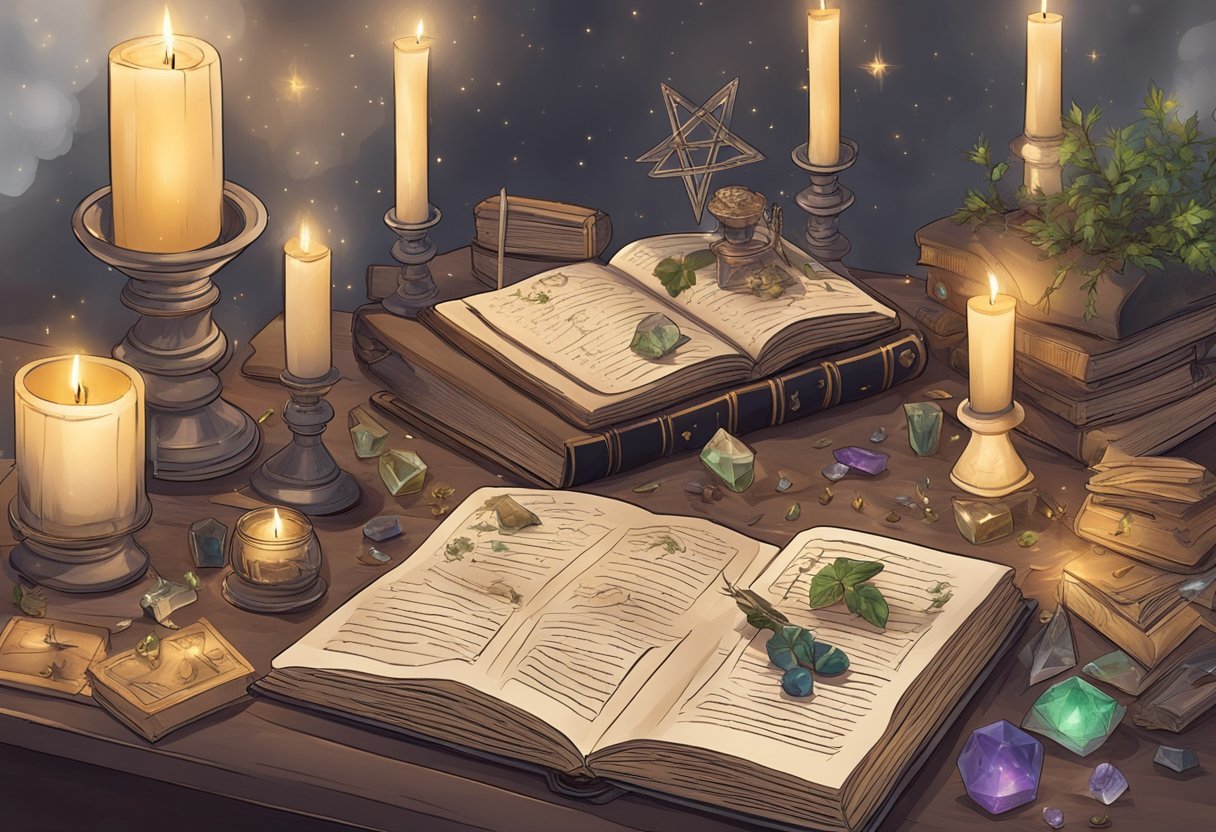
Witchcraft and Wicca are rooted in fundamental principles that guide practitioners’ worldviews and practices. These core beliefs encompass ethical guidelines, spiritual concepts, and a deep reverence for the natural world.
Moral Ethos and the Rede
The Wiccan Rede serves as a central ethical tenet, often summarized as “An it harm none, do what ye will.” This principle emphasizes personal responsibility and the avoidance of harm. Practitioners are encouraged to consider the consequences of their actions carefully.
The Rede promotes respect for all living beings and the environment. It guides Wiccans in their use of magic, emphasizing that spells and rituals should be performed with positive intent and without causing harm to others.
Self-discovery and empowerment are also key aspects of this moral framework. Wiccans are encouraged to explore their own spiritual paths and develop their personal power in alignment with ethical principles.
Deities and the Divine
Wiccan beliefs often include a duotheistic view of divinity, recognizing both a God and Goddess. The Triple Goddess, representing the maiden, mother, and crone aspects, is a common focus of worship. The Horned God, symbolizing nature and the wild, is her counterpart.
Many Wiccans view these deities as archetypal energies rather than literal beings. This perspective allows for a flexible approach to spirituality, with practitioners often connecting to divine aspects that resonate with their personal experiences.
Rituals and spells often involve invoking these divine energies. The pentacle, a five-pointed star within a circle, is a symbol used to represent the elements and divine forces in many Wiccan traditions.
The Role of Nature and the Elements
Nature plays a central role in Wiccan and witchcraft practices. The natural world is seen as sacred, and many rituals are performed outdoors to strengthen the connection with the environment.
The five elements – earth, air, fire, water, and spirit – are fundamental to Wiccan beliefs. Each element is associated with specific qualities and energies, and they are often invoked in rituals and spellwork.
Seasonal celebrations, known as Sabbats, mark the turning of the Wheel of the Year. These festivals align with natural cycles and are opportunities for Wiccans to attune themselves to the rhythms of nature.
Wiccan Rituals and Practices
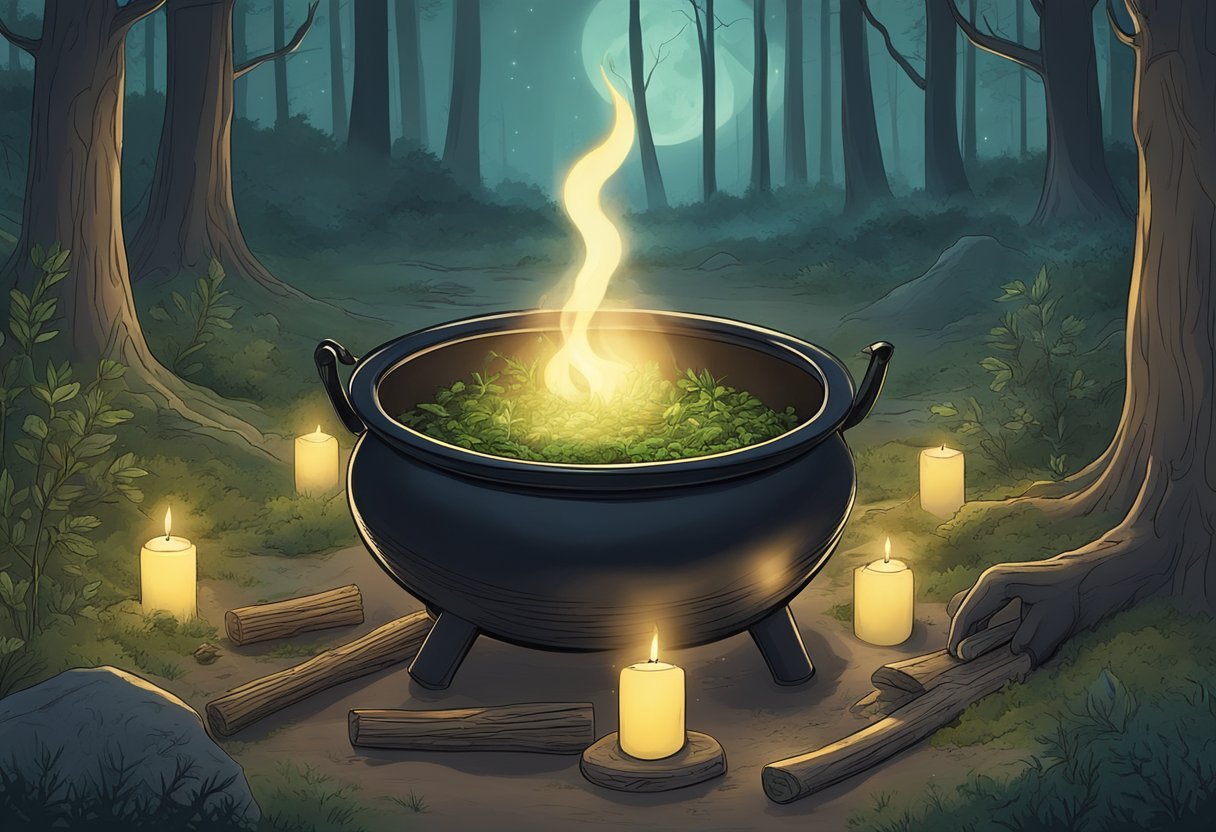
Wiccan rituals and practices form the core of this nature-based spiritual path. These practices include celebrating seasonal festivals, performing magic, and engaging in personal or group worship.
The Wheel of the Year: Celebrating Sabbats and Esbats
The Wheel of the Year is central to Wiccan beliefs and practices. It consists of eight Sabbats, or major festivals, that mark the solar cycle:
- Yule (Winter Solstice)
- Imbolc
- Ostara (Spring Equinox)
- Beltane
- Litha (Summer Solstice)
- Lammas
- Mabon (Autumn Equinox)
- Samhain
Each Sabbat has its own rituals and significance. Wiccans also observe Esbats, which are typically celebrated at the full moon. These lunar celebrations focus on personal magic and communion with the Goddess.
Crafting Spells and Conducting Rituals
Spellwork is an integral part of Wiccan practice. Practitioners use various forms of magic, including candle, crystal, and herbal magic. A typical spell might involve:
- Setting an intention
- Gathering materials (candles, herbs, crystals)
- Casting a circle
- Invoking deities or elements
- Raising energy
- Releasing the energy towards the desired outcome
Rituals often follow a similar structure but are more elaborate and may involve group participation. They can be performed for various purposes, such as celebrating Sabbats, honoring deities, or marking life transitions.
Coven vs. Solitary Practice
Wiccans can choose to practice in a coven or as solitary practitioners. Covens are groups of Wiccans who meet regularly to perform rituals, study, and support each other spiritually. They often have a hierarchical structure with experienced leaders guiding newer members.
Solitary practitioners, on the other hand, perform rituals and spellwork alone. They have the freedom to develop their own practices and beliefs within the broader Wiccan framework. Many modern Wiccans choose this path, adapting traditional practices to suit their individual needs and circumstances.
Both approaches have their merits, and many Wiccans move between solitary and coven practice throughout their spiritual journey.
Festivals and Holy Days
Wiccan and pagan traditions celebrate eight major sabbats throughout the year, marking seasonal changes and agricultural cycles. These festivals connect practitioners to nature’s rhythms and ancient spiritual practices.
Origins and History of Wiccan Holidays
The Wheel of the Year, a calendar of eight sabbats, originated from various European pagan traditions. Samhain, celebrated around October 31, marks the Celtic new year and honors ancestors. Yule, near the winter solstice, celebrates the rebirth of the sun.
Imbolc, on February 1, heralds the coming of spring. Ostara, at the spring equinox, honors fertility and renewal. Beltane, on May 1, celebrates life and passion.
Litha, the summer solstice, marks the sun’s peak. Lammas, also known as Lughnasadh, on August 1, celebrates the first harvest. Mabon, at the autumn equinox, gives thanks for the year’s bounty.
Observing the Seasons: Significance and Customs
Each sabbat involves specific rituals and customs tied to its seasonal significance. Samhain often includes divination and honoring the dead. Yule traditions involve decorating with evergreens and lighting candles.
Imbolc rituals focus on purification and blessing seeds for spring planting. Ostara celebrations might include egg decorating and nature walks. Beltane festivities often feature bonfires and maypole dances.
Litha rituals honor the sun through fire ceremonies. Lammas involves baking bread from the first grain harvest. Mabon celebrations include feasting and expressing gratitude for nature’s gifts.
Wiccans may observe these sabbats individually or in groups, adapting rituals to personal beliefs and local traditions.
Frequently Asked Questions
Witchcraft encompasses diverse beliefs, practices, and historical origins. Its modern expressions, like Wicca, integrate ancient wisdom with contemporary spirituality. Practitioners use various tools and techniques to connect with natural and supernatural forces.
What are the basic principles and beliefs in witchcraft?
Witchcraft centers on the belief in personal power and the ability to influence the world through magical practices. Many witches believe in a connection to nature and the elements.
They often practice rituals and spellwork to manifest desires or bring about change. Respect for the natural world and the concept of harm none are common ethical principles.
How does one begin their journey into practicing witchcraft?
Beginners often start by researching different traditions and finding one that resonates with their beliefs. Reading books on witchcraft and joining online communities can provide valuable information.
Practicing meditation and learning about herbalism are common first steps. Many novices also begin by creating an altar and acquiring basic tools like candles and crystals.
Can you describe the historical origins of witchcraft and its evolution into modern practice?
Witchcraft has roots in ancient pagan practices and folk magic traditions. Throughout history, it has been both revered and persecuted in various cultures.
Modern witchcraft, including Wicca, emerged in the mid-20th century. It blends ancient traditions with contemporary spiritual practices and emphasizes personal growth and empowerment.
What are the common tools and items a novice in witchcraft might require?
Novice witches often start with basic tools such as candles, crystals, and an athame (ritual knife). A Book of Shadows for recording spells and rituals is also common.
Other items may include herbs, incense, a wand, and a cauldron. The specific tools can vary depending on the individual’s chosen path and traditions.
What are the key differences between traditional witchcraft and Wicca?
Traditional witchcraft often focuses on folk magic and local traditions, while Wicca is a more structured, modern religion. Traditional witchcraft may not have a specific ethical code, unlike Wicca’s “Harm None” principle.
Wicca typically involves the worship of a God and Goddess, while traditional witchcraft may work with various spirits or no deities at all. Ritual practices and tools can also differ between the two.
How is deity worship integrated into Wiccan practices as opposed to other forms of witchcraft?
Wicca generally incorporates the worship of a Goddess and God, often seen as aspects of nature or universal forces. Rituals and spellwork in Wicca frequently involve invoking these deities.
Other forms of witchcraft may work with different pantheons, nature spirits, or no deities at all. Some practitioners focus solely on personal power and natural forces without deity worship.

